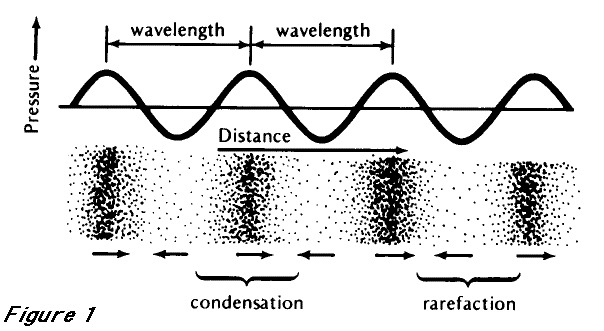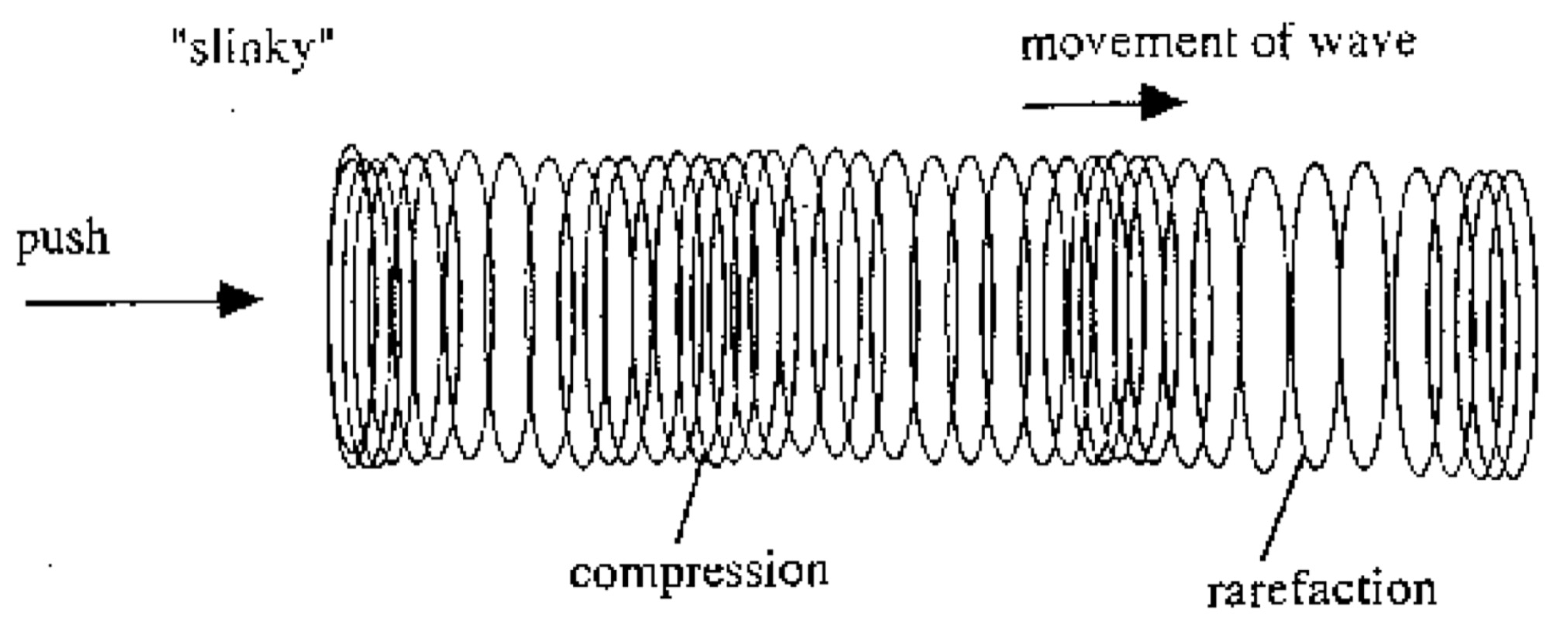
Will Styler - LIGN 113
Wednesdays 3-4 for Jiaang, Thursdays 3-4 for Grace
Fridays after class until noon for me
Please use office hours rather than booking appointments with me if you can!
What is sound?
What is hearing?
What are we covering?
What are we skipping?


Sound needs something to travel in (like air or water)

How do speakers work?
Why does clapping cause a sound, but waving your hand through the air doesn’t?
Why are gunshots loud?
If a tree falls in the forest and nobody’s around to hear it, does it still make a sound?
Amplitude/Power (“Loudness”)
Frequency (“Pitch”)


Turning pressure variations in the audible range into their perceptual reflex
A monolithic signal enters the ear, but a frequency-organized signal enters the mind
This is not a linear, clean mapping!
This signal is (usually) binaural, coming from both ears
Am I alone here?
Am I in danger?
“Is that sound real, or being played back by speakers?”
“Something doesn’t sound right…”
“Are you OK?”
It is fragile
It changes over time
It is limited
We don’t hear sounds exactly as they are
Is the jump in file A the same as in file B?
A.
B.
A.
B.
Is the jump in file A the same as in file B?
A. 400Hz - 600Hz
B. 10,400Hz - 10,600Hz
A. 400Hz- 500Hz
B. 6400Hz - 6500Hz
Anatomically (What are the physical structures?)
Acoustically (What are we hearing?)
Physiologically (How does this work in the body?)
Behaviorally (How do we respond to sound?)
Scientific study of the structures, mechanisms, functions, and behavioral results of human hearing
Physiological or Physical diseases, conditions or traumas resulting in sub-normal hearing ability
Anatomy of Hearing
Acoustics
Physiology of Hearing
Psychoacoustics
Hearing Disorders and Testing
Hearing Interventions
What are the structures of the ear?
How are they connected?
How do we divide the ear into subparts?
What elements of human anatomy are important for hearing?
What is sound?
What are its characteristics?
How is it transmitted?
How can we visualize, measure, and understand sound?
What sounds and parts of the sound spectrum are most important for quality of life?
What is hearing picking up on, anyways?
How does the ear work?
How does the cochlea work?
What reflexes, phenomena, and physiological processes aid, protect, and influence hearing?
How is auditory information transmitted to the brain?
What happens once it’s there?
How does hearing work in humans?
Are we perceiving sounds as they really are in the world?
How do we perceive acoustic phenomena like pitch and loudness?
How is hearing non-linear?
How can we tell where sound is coming from in the world aroud us?
How are we processing and intepreting our auditory input?
What are common causes of hearing loss?
What physiological processes are affected by various disorders?
Where do these disorders come from? How do they develop?
How can we identify and diagnose them?
What is the role of audiologists in this process?
What happens, and what is done, when hearing isn’t working as usual?
What methods are used to treat hearing disorders for patients who feel that desire?
What medical interventions exist?
What surgical interventions exist?
How do hearing aids work? Who do they help?
How do cochlear implants work? What are their downsides
What causes hearing loss, and how can it be treated for folks who want that?
We will take a more medical approach, ‘restoring towards common function’
We will refer to deafness and hearing loss as ‘disordered’
We will talk about ‘treating’ hearing loss
We will discuss Cochlear implants and Hearing Aids and their effects on quality of life
This is because this is the approach taken in most Audiology programs!
There are many perspectives, particularly within the Deaf community, on hearing ‘loss’ and hearing ‘treatment’
Understand that the point here is to understand the systems in play
We’ll talk more about this Friday!
Greater biological processes supporting hearing
Anything at the other end of the auditory nerves
Surrounding anatomy of the head and neck
Anything developmental!
Electronic filtering
Digital Signal Processing and Digital Enhancement of Audio
Infrasound and 20,000 Hz+ noise
Electrical Engineering for hearing science
Processing of auditory signals inside the brain
Development and growth of the auditory system
Musical psychoacoustics (e.g. missing fundamentals, sound ‘aesthetics’)
Applied psychoacoustics (e.g. music therapy, product design, etc)
Behavioral differences associated with assisted and CI hearing
Many, MANY less common disorders
Auditory Processing Disorders
Hearing aid fitting processes
Cochlear implant ongoing care and training
What else would you like to learn about hearing?
We’ll talk about the ears
Sound
How we’re able to hear
… and what it’s like when it goes right, and wrong!
Differing perspectives on hearing science, and the importance and compassion and choice
Please do the reading on Canvas